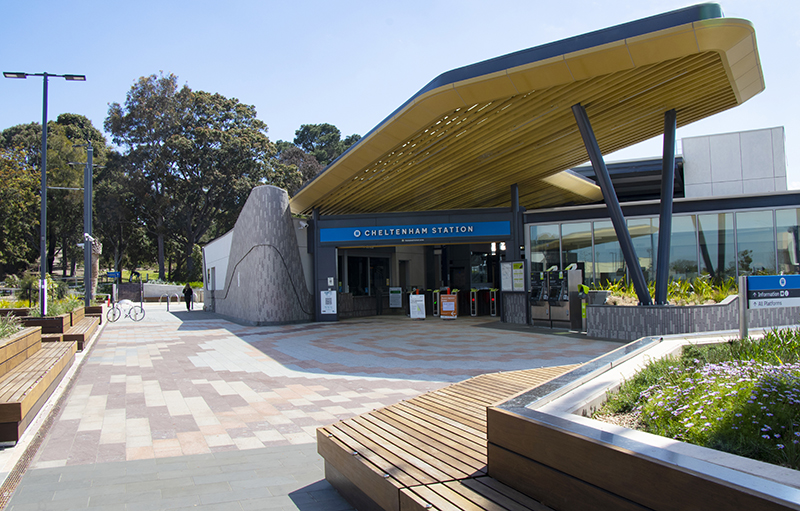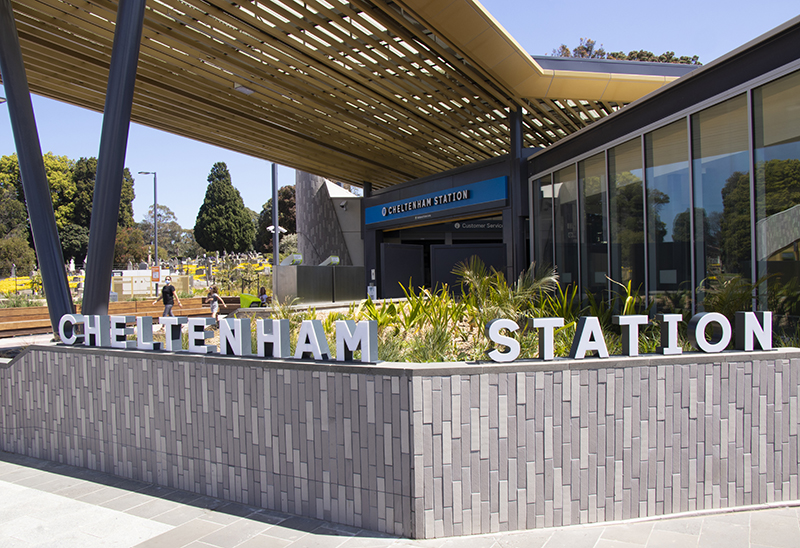Level Crossing Removal Project – Cheltenham Station
Location \ Cheltenham
Client \ Victorian Government, Level Crossing Removal Authority (LXRA)
Budget \ $588 M (total project value)
Duration \ 2020 – 2021
In partnership with \ Cox Architecture

The Victorian Government’s Level Crossing Removal Project is overseeing the largest rail infrastructure project in the state’s history. It will see the removal of 75 of Melbourne’s most dangerous and congested level crossings by 2025. The project will also see the upgrading or building of more than 27 train stations. Removing the level crossings will reduce risk for pedestrians, cyclists and motorists as well as creating new community spaces for residents and visitors to enjoy.
Rush Wright Associates is working with the Level Crossing Removal Authority (LXRA) and the Victorian Government to assist with the upgrade of a selection of stations on the Frankston Line.

At Cheltenham, the rail line will be lowered into a rail trench, with the roads to be rebuilt at their current level. This will coincide with the removal of the crossing at nearby Balcombe Road in Mentone. A new Cheltenham Station will be built as part of the project, while the existing station buildings will be removed and refurbished.
To include the Songlines of the Traditional Owners, we worked closely with an indigenous artist – Steve Ulula to integrate meaningful artwork design into the public realm. The design process revealed two best opportunities identified during the workshops: “Welcome Mat”- a graphic emended into the pavement surface and the wall “Mural”. The Welcome Mat includes integration of the custom-designed graphic artwork into the pavement area on the concourse. With the indigenous artwork application, the area of the concourse becomes a great opportunity for learning and raising awareness during community gatherings and social interactions.
The “Mural” is integrated onto the ramp wall leading to the Cheltenham Station entry. With the levels difference of approximately 3.3m, the walls along the ramps, previously blank and bland, are transformed through the integration of artwork. The artwork would be experienced by people walking up or down the ramp to the station entry.





